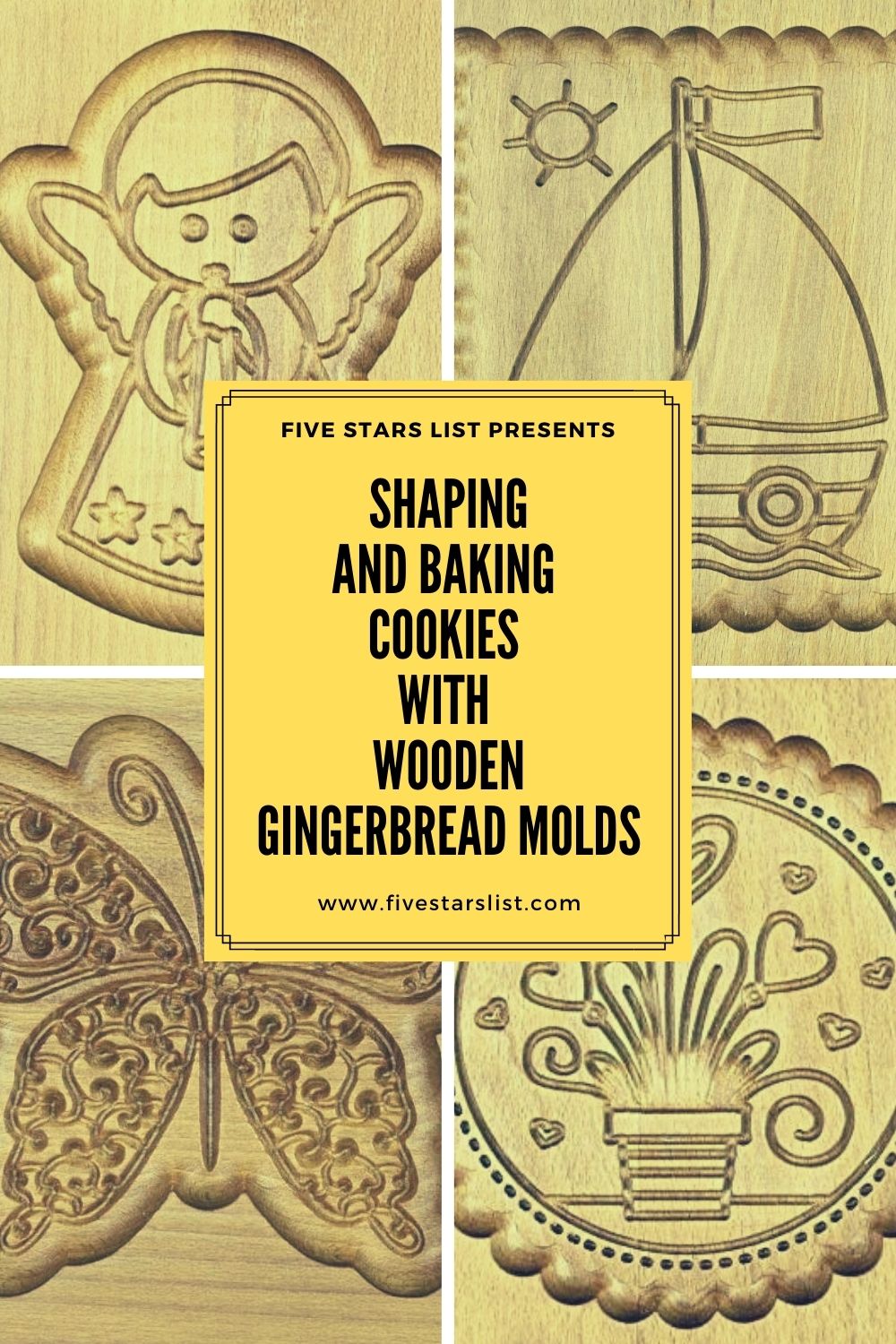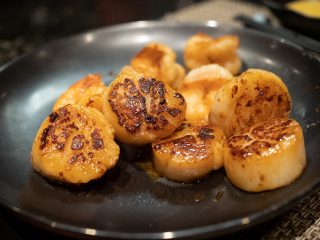As an Amazon Associate I earn from qualifying purchases.

Photo by Jill Wellington from Pexels
The holiday season is behind us, but if you ask me there is no such thing as bad timing for a nice bite of gingerbread. Americans have a long tradition of making gingerbread. Actually, it’s so long that it became an indispensable part of our tradition.
Today we’re bringing you an even more traditional way of making gingerbread in the shape of wooden gingerbread molds.
Take a sneak peek at the list and in the end we’ll share some tips and tricks on how to make your gingerbread irresistible.
Wooden Gingerbread Molds
A few days ago, while compiling ideas for our “special edition” of Christmas dinner, my wife was looking for embossed wooden rolling pins and came across wooden gingerbread molds. She found them cute and elegant, and that was her way to make even the process of making gingerbread cookies joyful. So, I knew that would be my pick for the next article here on Five Stars List.
Now let’s get to the essence. There are 8 variations on the topic, and I’ve listed all of them below. They are all made by DecoLazer, a small company from Ukraine, which makes various products out of natural wood.
Now, each one of these gingerbread molds or small gingerbread embossed boards are all made of natural beech wood and have a nice unique texture, color, and style. The boards are then treated or impregnated with linseed oil in a special vacuum unit.
The wood itself is a material that has a character and kind of emotional warmth – I’ve meant to say soul, but I’m sure you get what I mean. Even a sneak peek of the list won’t leave you indifferent – yeah, one just can’t resist purchasing them.
So, if you’re looking for something different and unusual; usable and durable; natural but still with a gentle touch of sophisticated rustic aesthetics, these wooden gingerbread molds are the best pick for you.
House in the woods

Check Price
Butterfly

Check Price
Unicorn

Check Price
Bouquet of hearts

Check Price
No products found.
Ship

Check Price
Cheerful deer

Check Price

Check Price
Most Common Materials for Gingerbread Molds
Thanks to the molds, we can more than easily turn gingerbread into any shape we want.
So we can nibble on snowflakes, bells, pine cones, and rapeseed stars for Christmas, and for Easter, we can enjoy bunnies, sheep, and flowers.
We can also make boys happy with the gingerbread in the shape of Santa, trains, cars, snowmen, horses, reindeer, and girls with small edible heels, handbags, or dresses.
To our delight, classic and web stores are full of molds of different sizes, shapes, and motifs, which are sold both individually and in appropriate sets.
1. Tinplate Molds
The most numerous and most diverse are tinplate molds.
Molds for cutting biscuits and cookies are mostly made of metal, most often of white sheet metal and stainless steel, but also copper and plastic materials. Sheet metal molds are the most numerous, most diverse, and very affordable, and in the pre-holiday period, they can be bought on almost every corner.
They cut well and precisely, but they lose their shape relatively easily, especially if they are used for years, and they rust just as easily. Here’s a tip: store them only when they are completely clean and completely dry. Also, after use, carefully remove all, even the smallest remnants of dough from the mold, wash them with detergent, rinse well with water and dry thoroughly with a kitchen towel.
2. Stainless Steel Molds
Stainless steel molds are very strong, leaving smooth and precise edges, so they can also be used to cut shapes with smaller details such as flakes. Although they are noticeably more expensive than tinplate molds, they are resistant to moisture and very durable. But the offer is not nearly as abundant as those made of tinplate.
3. Copper Gingerbread Molds
Copper molds are particularly precise and very durable, and therefore expensive, but you’ll hardly find them on the market. They can be used for generations, so the owners jealously guard them, and collectors value them highly because of their special beauty. It’s pretty hard to remove all the dough from copper molds and thus they are more difficult to maintain. That is especially the case if they are used to cut or imprint more complex motifs.
4. Plastic Molds
Furthermore, molds made of plastic materials are much cheaper, but also much lower quality than metal molds. They bend and break easily, so they do not cut precisely, and thus they are not suitable for more complex, smaller, larger shapes.
5. DIY Gingerbread Molds
You can also make the mold yourself by drawing the desired motif on thick cardboard, cutting it out, and placing it on the dough. Give it a try, you might be surprised by the results.
- To make the dough easier and more precise to cut into molds, wrap the dough in foil and keep it in the fridge for about half an hour, then roll it out to be perfectly smooth. You can roll the dough between two sheets of transparent kitchen foil or baking paper.
- To prevent the dough from sticking to the mold, dip the mold in flour or powdered sugar before cutting each individual gingerbread.
- If the dough has accumulated on the molds despite the flour, do not wash the molds immediately, especially if you are cutting out more complex motifs. Just wipe them well with kitchen paper because even the slightest residual water can prevent you from cutting the correct and clear edges.
- To keep the cut-out gingerbread in perfect shape during baking, place them in the freezer for 5 minutes before baking.
- Make sure that the molds are clean and, after use, wash them thoroughly with warm water and dish soap (clean the dough from the edges with a small brush), then rinse and dry well with a kitchen towel.
- You can also use molds to cut bread without a crust, and those made of tinplate to decorate an Advent wreath, a festive table, and a Christmas tree or Easter twigs.
- Instead of buying molds, cakes, and cookies in the shape of a circle, crescent or leaves can also be cut out with the use of a glass cup.
Image source: Amazon Product Advertising API
Amazon and the Amazon logo are trademarks of Amazon.com, Inc, or its affiliates.
Last update on 2025-04-26 / Affiliate links / Images from Amazon Product Advertising API




